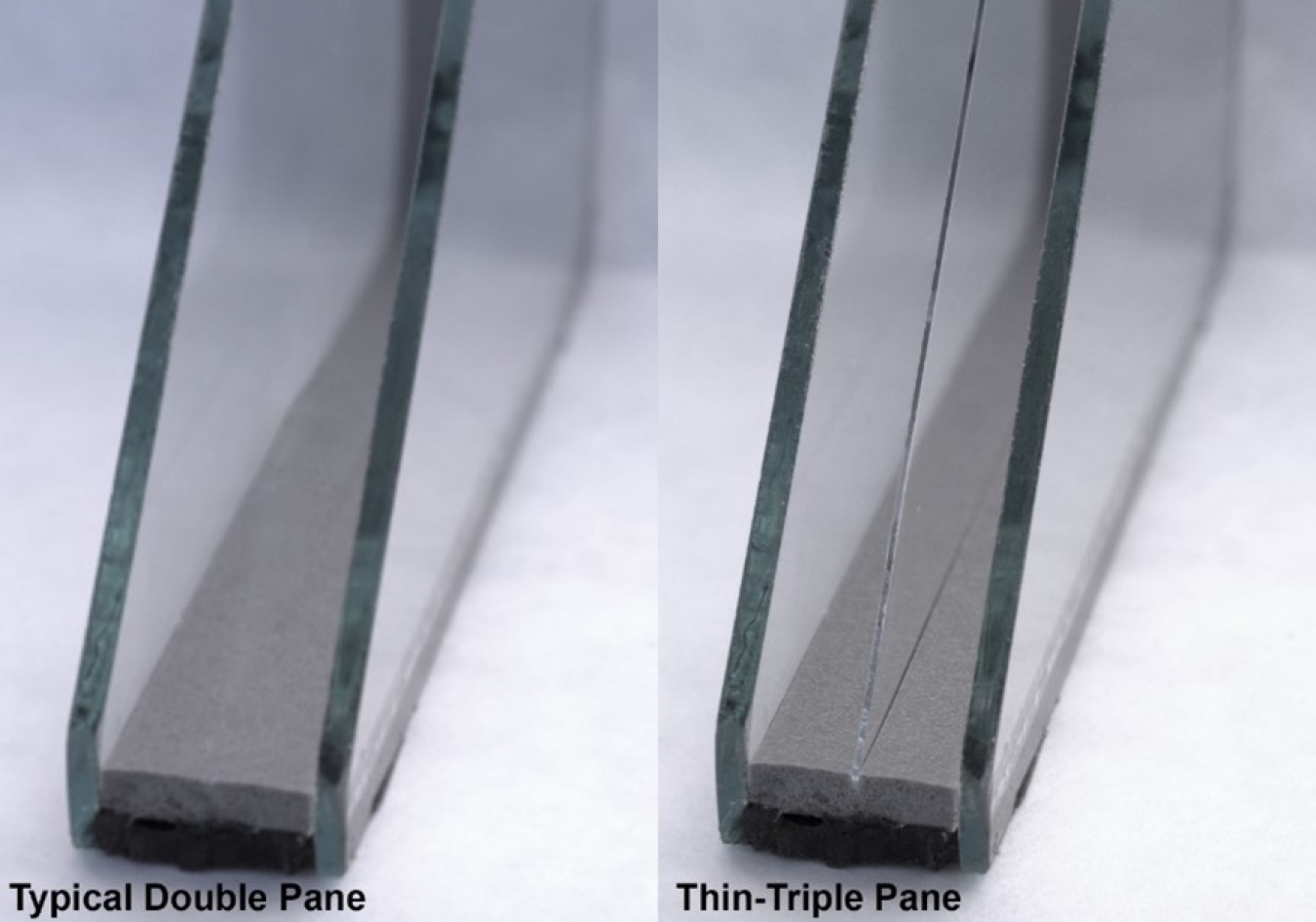Windows are essential elements of most buildings, but can be among the most energy-wasting parts of a home. Although they constitute only 10% of the surface area of a typical home, they can account for 30-40% of the heat loss in winter.
June 23, 2022Windows are essential elements of most buildings, but can be among the most energy-wasting parts of a home. Although they constitute only 10% of the surface area of a typical home, they can account for 30-40% of the heat loss in winter. To address this issue, the U.S. Department of Energy (DOE) is working to increase adoption of next-generation triple-pane windows, which will help homeowners conserve energy, reduce noise, and lower home energy bills.

Unlike traditional two-pane windows, thin glass triple-pane windows use a thin third pane to create two air spaces instead of one. They also have two low-emissivity coatings that reflect radiant heat. These windows can be produced by the same advanced glass manufacturing technology that creates thin but durable TV and computer screens.
Evidence for the energy and cost savings of triple-pane windows goes back to the first prototypes in 1989, but market adoption has been slow due to cost and availability. Recent studies from Lawrence Berkeley National Laboratory and Pacific Northwest National Laboratory have re-confirmed their effectiveness, showing that when the windows of a new home are upgraded from double-pane to triple-pane, energy-efficiency performance can improve by 40% or more, and that triple-pane windows reduced the perceived noise level by roughly half. Additionally, triple-pane windows can improve the performance of heat pumps. With better heat retention in the home, the windows will reduce heat pump sizing, peak loads, and electric resistance backup during early morning hours when heat pump performance is lower due to cold ambient air.
To build on this research and improve market adoption, the DOE launched the Partnership for Advanced Window Solutions (PAWS) in May 2021, as part of the Initiative for Better Energy, Emissions, and Equity (E3 Initiative). For the past year, the Building Technologies Office (BTO), DOE national labs and the Northwest Energy Efficiency Alliance have been working with builders, utilities, efficiency advocates, and manufacturers to both drive demand and scale up production of cost-effective triple-pane window designs and other high-performance window solutions.
With the help of DOE funding, the PAWS collaborative programs aim to:
- Provide energy and cost savings for homeowners both in new and existing single family and multifamily homes while enhancing occupant comfort.
- Contribute to emerging carbon savings goals and ease the transition to a decarbonized electric grid.
- Create new American jobs in window manufacturing plants and for the construction crews that install them.
PAWS employs a variety of market transformation strategies that will accelerate the national availability and adoption of highly efficient windows and window attachments. These strategies start with support for R&D for glass and window manufacturers, and technical assistance to upgrade production lines to the latest high-performance window technologies. For the consumer, PAWS is supporting development of rebate and incentive programs. PAWS is also engaging with building code organizing bodies to recognize and promote programs that encourage adoption of high-performance window solutions nationwide. The work of PAWS is supported by complimentary efforts such as EPA’s ENERGY STAR® Version 7.0. Though still in draft form, ENERGY STAR Version 7.0 proposes higher performance requirements for residential windows, which could be achieved with a triple-pane window design.
Programs like PAWS and others in the E3 Initiative drive deployment of energy-efficient technologies across the building sector, creating high-paying union jobs and opportunities for growth in the industry.

